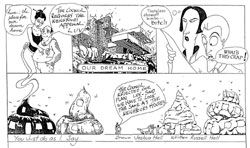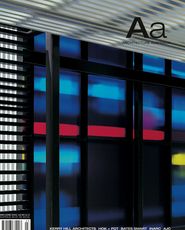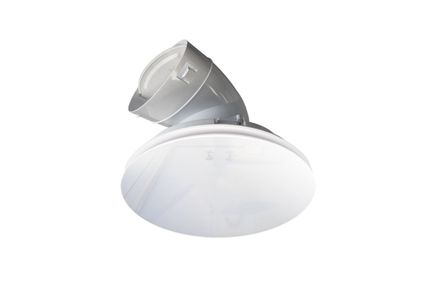MORE ON CRITICISM
Naomi Stead’s thoughtful piece on architectural criticism generalizes three longstanding complaints about the practice, one of which is that criticism is not sufficiently objective, a complaint she thinks at best misguided. Stead believes that objectivity is dubious or unachievable. She recommends instead that critics be “reflexive”, able to say where they are coming from. I agree with this recommendation, but that’s because I value objectivity. The extent to which a critic can say where she is coming from enables all concerned to better understand or judge her assertions and is one measure of her objectivity.
Stead is basically right about the idea of objectivity she rejects, and though it may be the common view of objectivity it is not one that would find many advocates. She rejects the idea of absolute objectivity but does not consider the possibility that one belief or attitude may nonetheless be more objective than another. “To acquire a more objective understanding of some aspect of life or the world,” the philosopher Thomas Nagel remarks, “we step back from our initial view of it and form a new conception which has that view and its relation to the world as its object. In other words, we place ourselves in the world that is to be understood.” The person who can recognize that a friend is “in denial” about some situation, for example, has a more objective view of that situation than does her friend. In any case, what would be the point of a critic understanding or indicating her position unless there were matters at stake beyond whatever interest anyone, herself included, might have just in how things seem to her? Critical disagreements risk being reduced to mere differences of opinion in Stead’s account, and while holding court to a variety of critical positions may excite us, nothing would turn on it. It may come as a surprise but how things are from my position is consistent with how things are from your position, however they are from your position and however they are in fact. Unless we allow the possibility, albeit limited or constrained, that we can transcend such positions, as Nagel suggests, there is little hope for criticism, and for much more besides.
Stead’s retreat from objectivity leads her to make the common mistake of speaking loosely about whatever constitutes our positions as our biases or prejudices. So what of the tutor who marks students down for obesity compared with the tutor who ignores body size? Neither tutor avoids having a position from which to assess the work, but only the position of the former is biased in this regard. Stead is thus much more relaxed than is desirable about our various allegiances, interests, obligations, constraints and biases. In architecture, as in society in general, however, it is necessary to construct and maintain institutions which in certain important respects ensure the independence of their members to act.
Think the separation of powers, cash for comment, weapons of mass destruction …
DR GREG BAMFORD
DEVELOPMENT PROCESS

I note with interest your recent articles regarding the development approval process.
Enclosed for your hopeful publication is a cartoon which I wrote and my son drew. It may helpfully lower the tone of the glossy publication. RUSSELL HALL
ZOOMORPHIC
Thank you for rekindling the debate on architectural bio-mimicry with Colin Martin’s enjoyable piece (Architecture Australia vol 93 no 1, Jan/Feb 2004). His final two sentences were an eloquent summary of this transient “movement”. My interest in this discourse is long, and I believe that a “complete” understanding of an organism’s structure, systems and behaviour is essential for a comprehensive response. This challenge extends beyond the clumsiness of mainstream “sustainable” design.
Architects and architectural thinkers have been looking to zoology and botany for years, to re-create or redirect a “pure” system – Deleuze and Guattari’s “Rhizome Theory” springs to mind. But in nature, a form is derived from a complex order and disorder of conditions. If a context is a system of environmental conditions, then sure, today’s computer software will help us to model a workable and practical response. And if we’re happy to operate behind a screen of rose-coloured glass, then “Zoomorphic” architecture is here. I have no doubt that something truly exciting will happen, but as in nature, it will evolve and purposefully exist to define environments for human life.
The word is “system”. The community or city, as a collective arrangement of various human activities, must exist as an ecosystem.
The Zoomorphic exhibition is a sidestep along a very long journey to this reality.
SAM AUKLAND
THE MISSING DETAILS
My father had architectural journals piled up in the garage at home. In the 1950s and 60s they were not ephemera but a semipermanent reference library of building details. As a boy I would often dip into the pile to see what I could find, and for me the magazines were fantastic. A set of wondrous delights for a young constructivist in the days between Meccano and Lego.
The old black-and-white photographs and the printing quality often dulled the magic of the architecture. However, the readable text and the building details explained the whole. Ink on paper detailing survived reproduction with clarity and the drafting techniques were creative, rational and cleverly brief.
The journals were packed with useful information for the profession. Development associations representing material suppliers would provide articles about the science of timber, aluminium, steel, copper and brass.
These usually included useful charts, graphs, dimensional information, fixing details and finishing techniques.
It was a time when sharing knowledge between the different arms of the building industry seemed to be of greater importance than just competing.
Like the vast majority in the profession, I don’t think I’ll become the next Adolf Loos. My work is building documentation. When I thumb through the seductive images of journals today, I miss the details – the bones, the muscles, the sinews and the reticulated services that keep my heart pumping.
HOWARD STYLES















